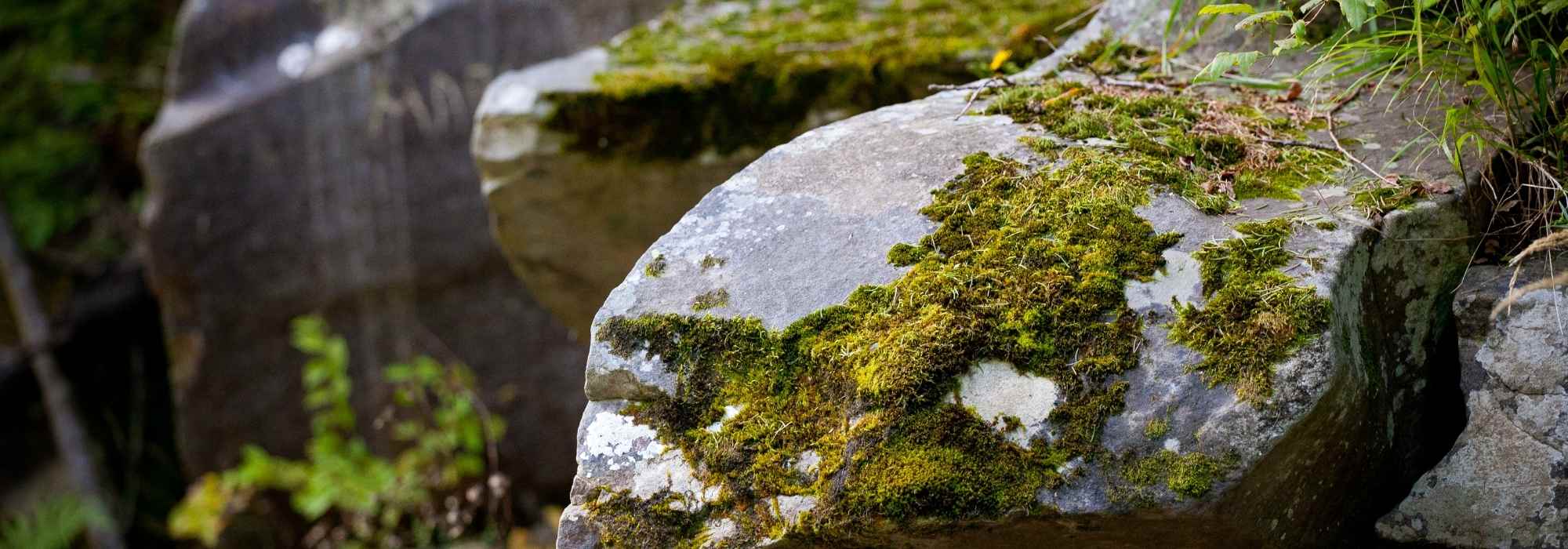
How to grow moss on rocks?
A natural patina for rocks, slabs, and concrete
Contents
Moss in the garden instantly adds a somewhat old-fashioned and weathered charm to the elements it colonises: old stones, cobbles, slabs, low walls, concrete, wooden stakes, and even… old tree bark. Moss requires little and manages to grow where no other plant would dare. If that is the case, moss is a fantastic ground cover that acts as a barrier to “weeds,” reducing the chore of weeding. Often, it’s enough to let nature take its course, and there it is. But sometimes, it takes so long… Fortunately, growing moss on stones or other inert surfaces is very simple and quick. Let’s see how to proceed in this advice sheet!
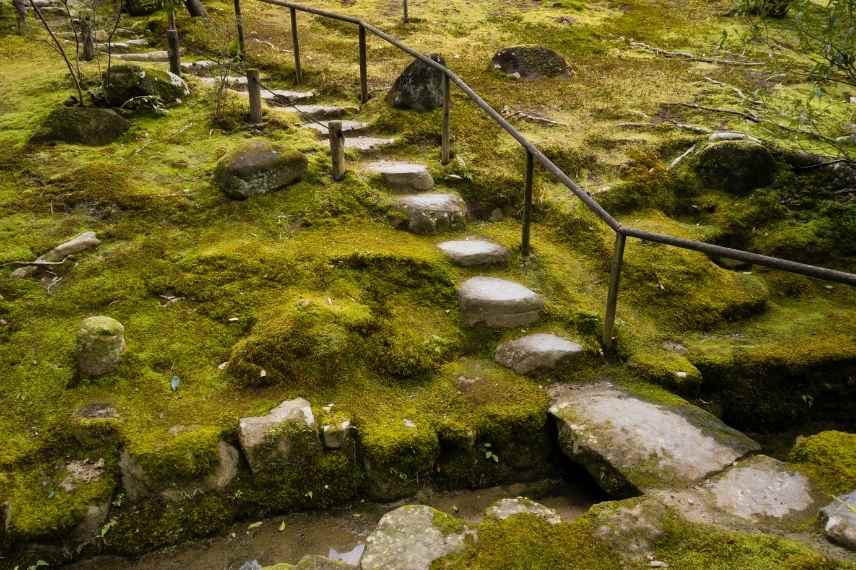
Moss in the garden
Moss: a highly decorative element!
Moss quickly adds a charming touch to an ornamental garden as it colonises stones, the gaps between slabs, old walls, concrete or wooden posts, or even the bark of old trees. Some gardeners wage war against it, especially in lawns. Yet, when moss covers the inert elements of the garden, it gives them a whimsical and mature aspect: half Brocéliande, half Hobbiton. In fact, the Japanese are fond of it and do not hesitate to create entire gardens dedicated to it, such as in Kyoto: the Saihō-Ji or Temple of Moss. Moss then forms a very effective mulch that weeds struggle to penetrate, while keeping the base of bush and perennial plantings cool.
Moss: essential for biodiversity
Moreover, moss is also very beneficial to the small wildlife in the garden. Whether as nesting material for certain birds and small mammals or as shelter for some insects, arthropods, and microorganisms. Additionally, it is very soft to the touch and visually appealing, and mosses require extremely little and there are varieties for every situation. You would really have to be in a bad mood not to let it grow in your garden.
Please note: Be careful not to confuse lichen and moss. Mosses or bryophyta, although primitive (without flowers and lacking a true root system), are indeed plants. In contrast, lichens belong to the kingdom of Fungi (fungi in the broad sense) as they result from a symbiosis between an alga (in over 90% of cases) and a sexual part, the fungus. In other words, confusing lichen and moss is a bit like confusing a giraffe with a tomato plant. That said, both groups should be welcomed in my garden, as they are beneficial to nature and not at all harmful to plants.
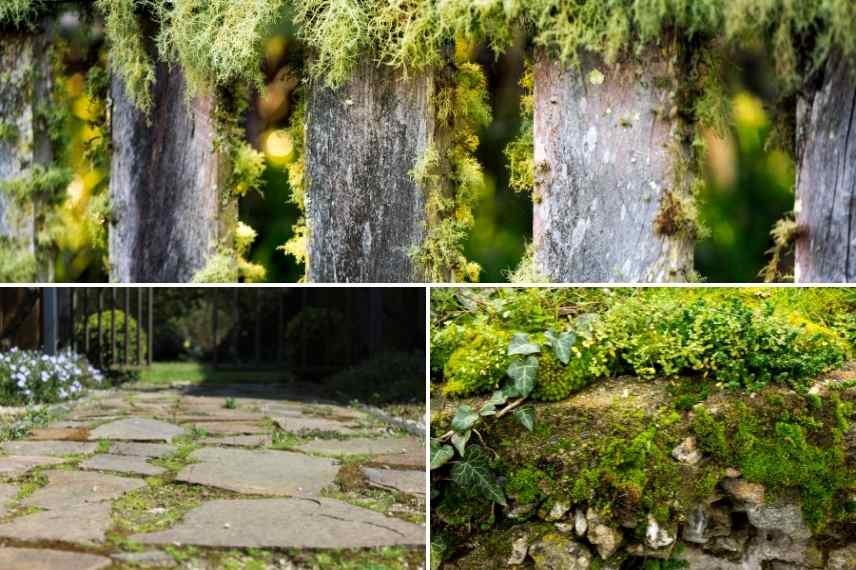 Moss settling on wooden barriers, paving, and walls has a lot of character
Moss settling on wooden barriers, paving, and walls has a lot of character
How to get moss on stones?
-
First method: do nothing!
It’s easier to let nature take its course, but… it’s also much slower. So, let’s move on to the second method.
-
Second method for the impatient
First, you will need to collect some moss, but there are two important points to consider.
Mosses are grouped in the Bryophyta division and include no fewer than 20,000 species recorded worldwide, with 1,300 species found in France alone (over a hundred new species are discovered each year globally). Among all these species, not all have the same needs: some prefer a constantly moist medium, others appreciate occasional dryness, some thrive in shade, while others do very well in sunlight… In other words, if you are not a bryologist, carefully observe where the moss you collect grows and provide it with the same growing conditions.
The second point to consider is that collecting mosses in the wild is either prohibited or heavily regulated. Instead, look for them in your own garden or at a friend’s!
The “propagation by cuttings” of moss should ideally be done during the wettest and mildest periods: late summer to early autumn or late spring.
- Collect the mosses you wish to reproduce;
- Mosses propagate surprisingly well; a simple small piece can grow into a complete individual. Therefore, either blend a good handful of your mosses in a mixer or, if like me you don’t want to sacrifice a mixer, finely chop them with a knife or a pair of scissors;
- Add 500 ml of water and a good tablespoon of yoghurt or a few millilitres of buttermilk* (this will act as glue) into the mixer or a bowl;
- Use a large flat brush to apply this mixture to the surface you want to vegetate: stone, bark, slabs…;
- While waiting for new shoots to appear (in about 6 weeks), keep the area moist by regularly misting with rainwater;
- Once the mosses have survived their first summer, they will manage on their own.
*One author suggests replacing yoghurt with pottery clay. According to him, the mixture would be stickier and therefore more effective for growing moss. I haven’t tried it, but if you do, feel free to share your experience in the comments.
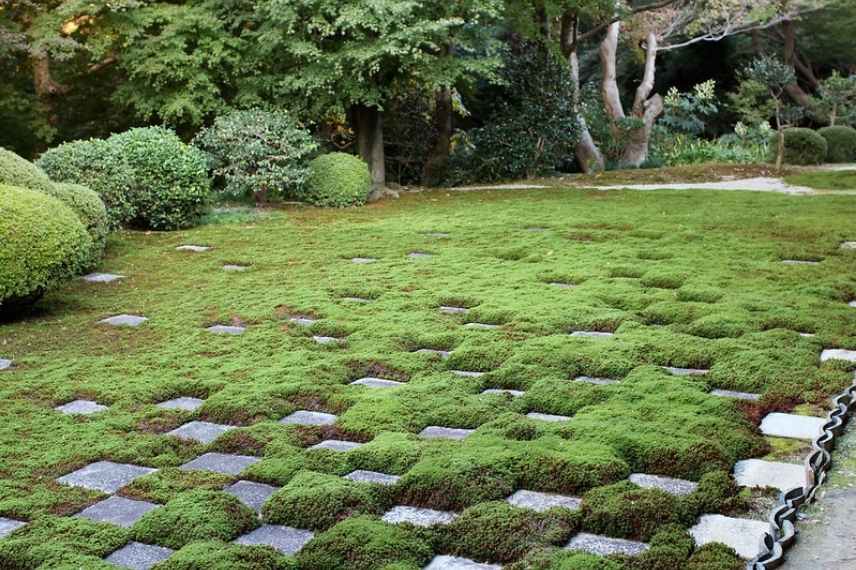
Moss and stone garden (© Kim Unertl)
To go further...
If you wish to learn more about mosses, the Francophone literature is unfortunately quite limited. The Wikipedia site will provide you with the main information, but a few works will complement the subject.
- Mosses, Lichens and Ferns: These Essential Yet Overlooked Organisms of the Forest by Franck Massé, CNPF, 2020 is a good starting point to understand the usefulness of these little-known living beings.
- Introduction to Bryology by Stéphane Leblond and Annabelle Boucher is available as a free PDF online and is very comprehensive regarding the biology of bryophyta.
- New Flora of Mosses and Hepatics by Charles Isidore Douin published by Belin is… very good, but quite difficult to use if you haven’t completed a degree in bryophytes. We are therefore awaiting a guide to mosses in the “Fous de Nature” collection from Belin, similar to the excellent volumes on lichens and ferns.
- Mosses and Lichens by Volkmar Wirth published by Delachaux et Niestlé remains the only true work on the subject in French, yet it is very incomplete. But in the absence of thrushes, we make do with blackbirds…
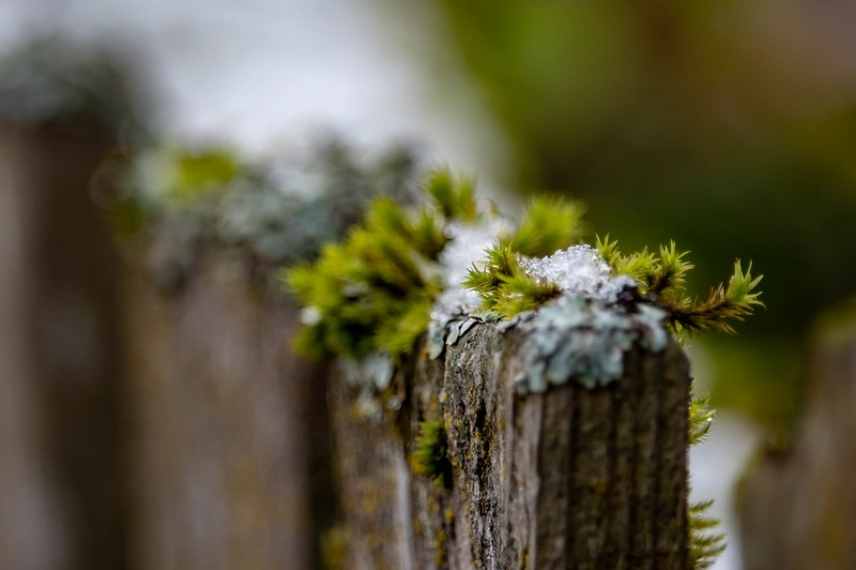
© David Geitgey Sierralupe
- Subscribe!
- Contents
































Comments